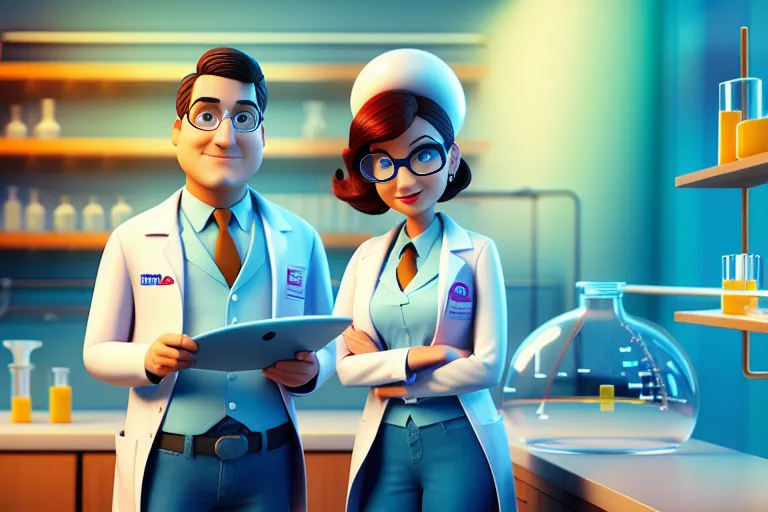DevOps emerged as one of the primary approaches to bridge the gap between these traditionally separate domains in software development and operations. Yet, for many organizations, the actual implementation of DevOps principles often proves more complex than anticipated.
Let’s examine these challenges and learn from Site Reliability Engineering (SRE) to enhance DevOps practices.
Note: Some will argue that SRE is a form of DevOps; for this discussion, we’ll focus on SRE as the engineering role employed by hyperscalers and consider DevOps as it is commonly described and applied in industry practice today.
The DevOps Dilemma
DevOps is a philosophy that seeks to integrate software development and operations, emphasizing collaboration, automation, and integration. While this sounds exciting, development teams have differing needs, leading to a proliferation of tools and practices, such as GitOps, YAML workflows, and infrastructure as code. While intended to streamline processes, they often add layers of complexity.
Let’s imagine a scenario where every time you wanted to make a cup of coffee, you had to configure a YAML file, push it to a Git repository, and then execute a series of commands. Sounds tedious, right? Many teams face this complexity and friction on a daily basis. Adding a new, more complex tool to the mix doesn’t inspire a team to produce easy-to-use software; it can have the opposite effect.
One of DevOps’ primary challenges is addressing friction in the development process. When developers encounter obstacles to their workflow, it’s not uncommon for them to resort to band-aid fixes or short-sighted workarounds. As time passes, these practices accumulate technical debt, impeding the introduction of new features, bug fixes, and system maintenance, ultimately affecting business outcomes and customer satisfaction.
Silos Aren’t Just For Grain

Another substantial challenge is the inherently siloed nature of DevOps work. Production teams, comprising specialists such as designers, mobile developers, web developers, and product managers, often operate on different schedules and priorities. This can turn DevOps into an ancillary team facing unique challenges.
DevOps engineers focus on deployment, scalability, and infrastructure, which differs from product developers, who are often more concerned with meeting business deadlines and developing features. This specialization gap can create significant barriers to adopting new tools and practices:
Introducing new and complex tools to team members without the necessary background may lead to resistance.
Teams may be skeptical of solutions developed outside their immediate circle, a phenomenon known as “Not Invented Here” (NIH) syndrome. When DevOps engineers create tools in isolation, there’s often limited input from potential end-users (e.g., the product team), resulting in tools that are not sufficiently vetted.
Absence of regular feedback from end-users may lead to misaligned priorities and inefficient resource allocation.
The SRE Solution
Site Reliability Engineers (SREs) or Production Engineers (PEs) bring a fresh perspective to these challenges. Unlike traditional sysadmins, who operate systems separate from developers, SREs are specialized engineers who join teams for limited engagements, build tools, and address issues while being part of the team.
Google, a tech behemoth known for its vast array of services and unparalleled scale, has been a pioneer in adopting and promoting the SRE model. At Google, SRE is not just a role but a philosophy based on the belief that embedding engineers with deep operational knowledge into product teams is the most effective way to ensure system reliability. These SREs work hand-in-hand with product developers, ensuring that the software is functional but also scalable, reliable, and efficient.
SREs focus on automating as many operational tasks as possible, adhering to the principle that “operations is a software problem.” This approach reduces manual intervention and associated errors while allowing for rapid scaling and adaptability. SREs don’t simply build tools and automation; they immerse themselves in the team, influencing development practices. They act as educators, teaching teams how to produce more robust systems.
SRE responsibilities are diverse a significant portion of time is spent on operations work, including emergency incident response, change management, and IT infrastructure management. These engineers also support the development team in creating new features and stabilizing production systems while continuously improving processes through post-incident reviews and knowledge sharing.
The hands-on approach ensures that the tools and the team’s culture are well-targeted and comprehensive, as they were developed internally. When an SRE transitions to their next assignment, they don’t just leave behind tools; they leave behind a legacy. A legacy of a team that’s empowered, educated, and equipped to navigate the challenges of modern software development through automation.
Testing and The Human Element

Computers are infallible; humans are not.
This adage, while simplistic, captures the essence of most production issues in the software realm. Most production hiccups, ranging from minor glitches to significant outages, can be attributed to human error or oversight. Whether it’s an inadequately reviewed code change,
a configuration tweak that went awry, or an unintended consequence of a manual override, human error is often the root cause particularly from those closest to the software.
As a developer, one of the most impactful things you can do for operations is to protect operations from yourself.
Testing plays a crucial role in verifying that the software aligns with its intended functionality. As Robert C. Martin once noted, _“Truth can only be found in one place: the code.” _ But what happens when that truth is distorted by human error? That’s where tests come into play, ensuring that the software we envisioned aligns with what is running in production. However, like any tool wielded by humans, its effectiveness varies significantly. Over-testing can slow development, while inadequate or irrelevant tests can provide a false sense of security. Striking the right balance is crucial.
The good news is that developers aren’t resistant to change; they’re resistant to slowdowns. If presented with tools that enhance safety without compromising speed, adoption becomes a no-brainer. It’s akin to offering a race car driver a faster and better-equipped vehicle with the best safety features. Who would say no?
Removing old, redundant tests is a step in this direction. While tests are crucial, outdated or irrelevant tests can clutter the development process, providing a false sense of security without adding real value. By pruning these tests, developers can focus on what truly matters, ensuring their code is efficient and robust.
Well-crafted tests can be a game-changer when complemented by integrated DevOps tooling, such as monitoring and tracing.
For example, when asserting that metrics match, a test can be a unit test, and monitoring is verified to be functional with helpful information. Additionally, a performance integration test as part of the CI/CD pipeline can ensure that production infrastructure as code (IaC) works, while giving developers a new superpower to test whether their code is faster or slower.
Tests can provide fascinating insights into development team practices. Revealing what’s changing, how often, where potential issues could arise, and if the developer’s fears match production. Focusing on bridging gaps in understanding or expectations through tests can have an outsized impact, as they are a leading indicator of where corners are being cut to move faster.
Testing leads to failure, and failure leads to understanding — Burt Rutan
Moving Forward: Improving DevOps Practices

While DevOps has historically focused on bringing developers closer to
operations via automation, SRE aims to bring sysadmin knowledge directly to development teams to build automation. This distinction can lead to significantly different outcomes.
So let’s learn from SREs and help developers better!
To improve DevOps practices, consider the following approaches:
Embed and Engage: Join teams for limited periods to understand their needs, challenges, and goals. Shared experiences foster mutual trust.
Educate: Integrate monitoring, alerting, and logging into the development process. Demonstrate the value of these practices for both production and development cycles.
Build and Integrate: Develop tools and systems that align with team needs, particularly in testing and development. Tailor solutions based on a thorough understanding of team requirements.
Evolve: Your role extends beyond merely maintaining YAML hygiene or fixing pipeline issues. It’s about education, tool development, and then moving on to the next challenge, so the business can also.
The path ahead for DevOps isn’t just about tweaking configurations - it’s about rolling up our sleeves, joining forces with dev teams, and building stuff that makes their lives easier.
